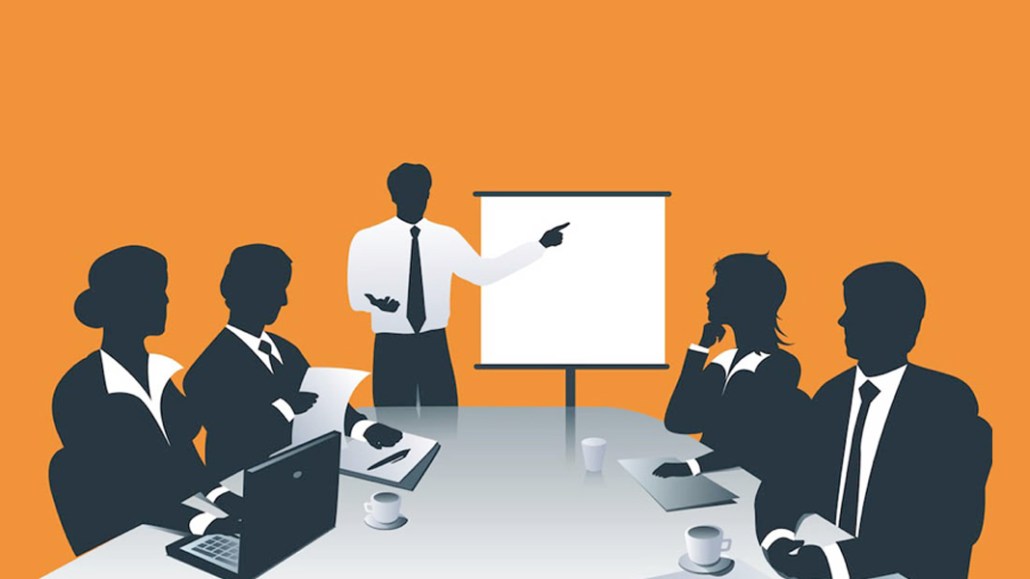‘Reinventing the wheel’: The reality of getting rival agencies to work together

Getting rival agencies to put aside their differences and collaborate could be big for Procter & Gamble, but it will be a complicated endeavor.
The advertiser’s decision to bring rivals from the big ad networks Publicis, WPP and Omnicom together to form a new creative agency has been the talk of the industry this week. It was enough to convince telecommunications firm O2 to disclose its own attempt to bring talent together from competing agencies, eight months after it shared its plan with Digiday. Both advertisers pitch their latest attempts to squeeze value from agencies as a break from the status quo, driven by a need for business effectiveness rather than procurement efficiencies. Sounds good on paper, but reality tends to be a bit, well, messier when the agencies all have different agendas.
For P&G’s model to amount to more than just cost savings and higher margins, chief marketer Marc Pritchard must ensure his agencies are all incentivized against the same KPI, while establishing a leader that can drive the new agency and be accountable. The skill required to make rival agencies work together is less glamorous than the idea.
There should be no commission model to avoid biased recommendations to the benefit of more content development and media activation, said Laetitia Zinetti, managing principal for media management at Ebiquity. Pritchard’s plan is a “very ambitious,” said Zinetti, and given the state of agencies it will be interesting to see how accommodating they will be. “The agency model has to change. But change takes time, and it seems that things will change only if advertisers take the lead. P&G and O2 are pioneers, challenging the market. The changes those advertisers are about to make to their agency models will impact the whole industry.”
An O2 spokesperson said its own so-called planning hub, which unites planners from across its media, creative and customer-relationship management agencies, prioritizes a “team culture” to foster greater collaboration with “shared objectives, social events and guest speakers.” It may have been created with a mantra of agility, the spokesperson added, but the focus is very much on effectiveness. The planning hub is based out of one office three days a week, with an O2 executive ensuring the different agencies collaborate. This O2 executive has both integrated agency and client-side experience, according to the company. O2’s CMO Nina Bibby and other senior members from her team also have regular meetings with the planning hub’s agency heads to discuss brand effectiveness.
While it wouldn’t reveal specifics, O2 is using performance-related metrics to make up part of the fee to the agencies involved in the initiative. The advertiser is so impressed with the model that it plans on extending it beyond planning to other parts of its marketing. If that happens, O2 could end up with a model that is similar to Deutsche Telekom’s attempt to get competing businesses to work together on its media planning.
Working more closely together will always produce more powerful creative work. Yet the so-called “new models” from P&G and O2 sound like “reinventing the wheel,” said Philippe Dominois, founder at media performance consultancy Abintus Consulting. Granted, the full details of each model have yet to be disclosed, but Dominois believes the industry has seen similar moves before.
“For me, the solution needs to be a good fit with the advertiser and offer a model which is a mirror image of the advertiser’s structure and decision-making process,” he said. “Is it a top-down approach or a bottom-up approach? These are some of the things to consider when offering a agency model to advertisers.”
Those questions aren’t alien to Pritchard and Bibby. Having different agency groups is nothing new to those marketers. Not all advertisers use one agency group globally. Some use different agency groups, split by market, region or brand. Some advertisers use two agencies for the same market and pitch them for every single campaign.
All parties involved in any model that pulls together rivals must share the same ambitions, and measurements of success need to be singular and fair, said Scott Moorhead, the founder of media consultancy Aperto One and a former media buyer at Publicis and Havas. “You need to ensure that you have removed self-interest and silo mentality,” he said. “How do you ensure that all work is only produced in the advertiser’s best interest and not the influenced by individual parties? Get that right, and the model is a no-brainer.”
More in Media

Here are the biggest misconceptions about AI content scraping
An increase in bots scraping content from publishers’ sites represents a huge threat to their businesses. But scraping for AI training and scraping for real-time outputs present different challenges and opportunities.

How Future is using its own AI engine to turn deeper engagement into ad dollars
Future is betting on AI to boost recirculation – and make that stickier audience more appealing to advertisers.

Substack’s video bet could be a growth hack for small creators
Video is helping smaller creators on Substack grow their subscriber numbers faster — but larger creators aren’t experiencing the same boost.





